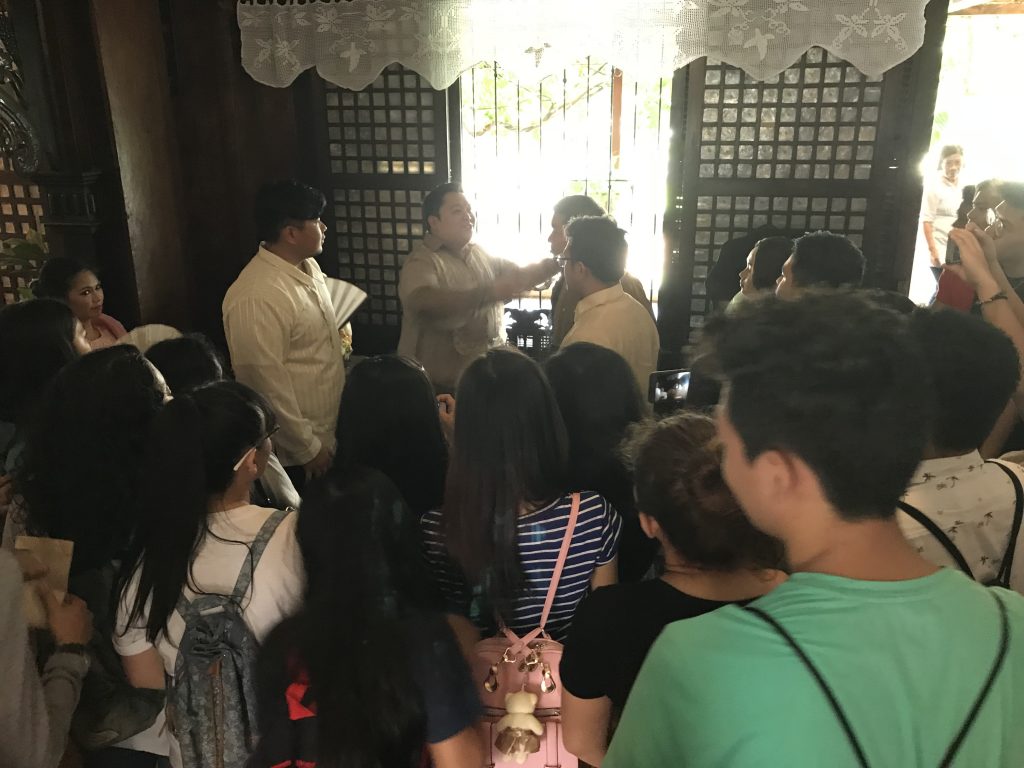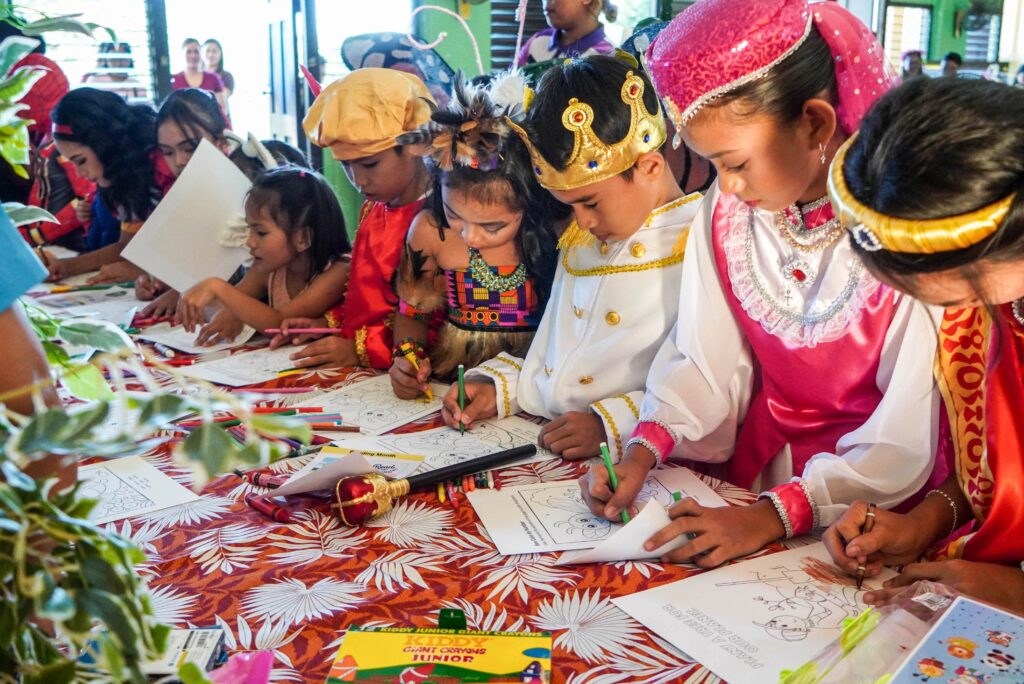

Previous
Next
Several groups of young guests of Casa Gorordo Museum of the Ramon Aboitiz Foundation Inc. (RAFI-CGM) experienced how it was to be in love in the time of their great grandparents. A century ago, everything was not a Facebook away or a matter of Tinder’s swipes to the left or right.
Over 600 students from different universities in Cebu joined the “Rites of Love: Cebuano Customs and Artistic Expressions on Courtship and Romance” at the CGM last Feb. 8-10, 2018. Since the museum is a historic house built in 1863, reenactments of courtship were integrated in the tour. But unlike the daily routine at the museum, harana opened the event, followed by the pamisita and then finally, pamalaye.
The harana, a tradition of men wooing their love interest through a serenade, was done outside the house. In this scene, two suitors vied for the acceptance of the young lady. She came out and stayed at the azotea to listen to the songs. As a sign of acceptance, she threw a white handkerchief to the man she wanted to invite into the house and poured water to the one she denied.
“Although it’s a traditional way, I feel that for some people, it’s still effective. Expressing love through music has never gone old; people still feel ‘kilig’ when being sung to,” commented Kurt Fick, a composer and singer who recently launched a new single “In-love ra Kutob,” adding to his collection of original Cebuano pop love songs “Hahahasula,” “Puhon,” and “Bok Love.”
“I think for some people, there’s a thin line dividing the act from the song in itself,” Fick went on. “I can’t say that Cebuano love songs in general are the modern-day counterpart of harana. But the thought of having people dedicate these Cebuano love songs to the ones they love as a way of expressing or articulating what they feel, may count as a factor that makes it a present-day counterpart.”
Other times, however, the balitaw becomes the prelude to courtship. The balitaw is a debate or dialogue between a man and a woman, both competing to see who can outsmart the other through improvised verses. The objective is for the man to convince the woman to accept his suit; but if the man cannot do so, it is implied that the man is not worthy to be the women’s partner for life.
Furthermore, the balitaw is performed in song and dance. Thus, it is considered a performance art. It is also a Cebuano poetic tradition. The verses come in quatrains, follows a rhyme scheme (usually aabb, abab, or abba), consistently octo- to dodecasyllabic, and replete with local metaphors.
Upon entry to the house, the young man was led to the suitor’s corner for the pamisita scene, where the mother and her daughter, sitting on the bench, received him. The matriarch positioned herself in between the two lovers. Limited to this part of the house, the suitor sat on a chair only after he was offered to. In the olden times, this was the only chance where the lovers could interact. Physical gestures of closeness, such as holding hands and kissing on the cheeks, were prohibited.
After a long courtship, the pamalaye usually occurred. In the CGM reenactment, families of both parties gathered at the private sala. In the pamalaye, both parties were represented by the “dakong tawo” or the spokesperson. These two men were usually selected for their articulateness and negotiation skills. The ritual opens with the two men engaged in verbal jousting, or balagtasan, until the woman’s party has exhausted all means of parrying the man’s intentions, and begins with the negotiations and agreements.
All these intricacies of courtship and marriage show how love was never taken lightly and easily, and that matters of the heart are matters taken by the family.


